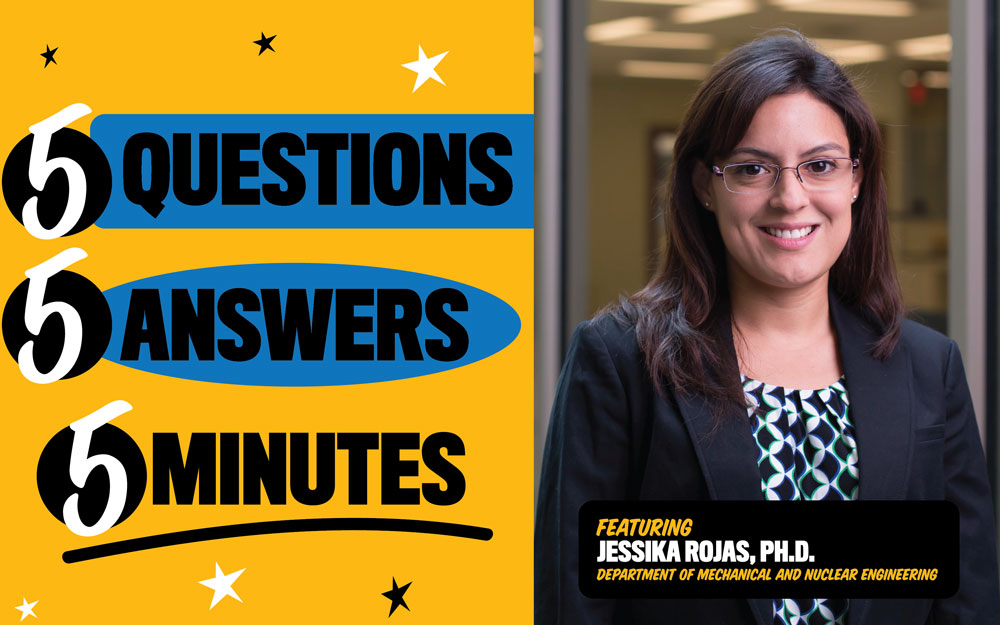A nuclear engineering expert specializing in nanomaterials and radiation-induced synthesis, Jessika Rojas, Ph.D., is an assistant professor in the Department of Mechanical and Nuclear Engineering.
1. What are you working on right now?
I’m working in fields that combine materials science and nuclear science and technology. My lab’s research areas include radiation chemistry, medical and environmental applications of radiation, and nuclear materials. One of the current projects aims to develop nanomaterials to enhance efficacy of radiation therapy while minimizing side effects. Another exciting area we’re working on involves accident tolerant fuels (ATF) for nuclear reactors, which are intended to increase safety and last longer. We’re particularly interested in surface characteristics of ATF cladding materials and their impact on critical heat flux (CHF).
2. What do you hope to achieve with this research?
We hope to provide suitable carriers for medical radioisotopes that will permit simultaneous imaging and treatment. We also hope to provide inorganic nanostructures to amplify radiation to the target tissue. We see these platforms as a strategy for localized treatment of diseased tissue with minimal side effects. In our work on ATF, we hope to help create better methods for predicting CHF. Ultimately, this work helps us understand the thermal performance of these nuclear materials and establish safety and operational margins.
3. What attracted you to this research?
As an undergraduate, I was captivated by the applications of nuclear science and technology and pursued a minor in radiological sciences. It’s fascinating to see how radiation can be used to modify materials’ properties and also to treat diseases, just to mention a couple. For example, nuclear reactor components are exposed to harsh environments, so it’s critical to understand their materials’ performance. Materials science has a lot to offer in the field of nuclear materials. And this is how I still remain attracted and enjoy this research!
4. Are any other VCU faculty members and/or students involved in this project?
Yes! Our research team includes several graduate and undergraduate students who have done an exceptional job advancing our lab’s research activities. We have also hosted high school students through the DERI program. We engage these students in a specific research project, provide them with extended research experience, and encourage them to pursue a career in STEM.
5. Has anything special at VCU or about VCU helped move this project forward?
VCU provides a great environment for hands-on research experiences for students. This includes training opportunities in laboratory tools as well as access to extensive library resources. This certainly helps move our projects forward. We also have several core facilities where the students can gain skills in specialized instruments allowing them to explore and advance in their research.
Fun fact: I enjoy assembling jigsaw puzzles — the more pieces it has, the better!
